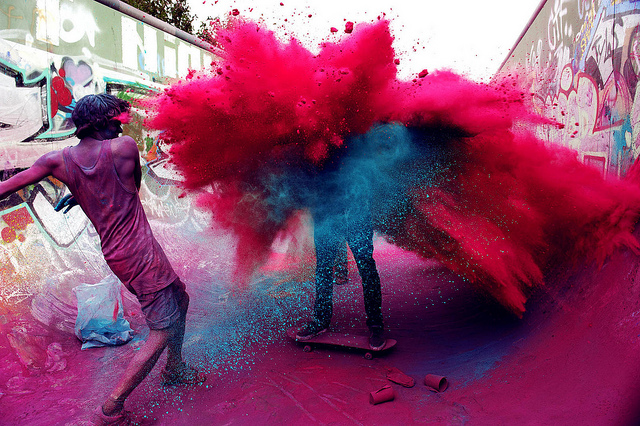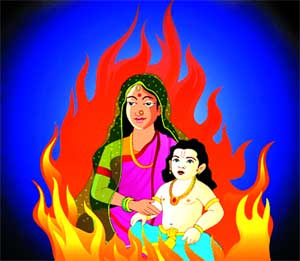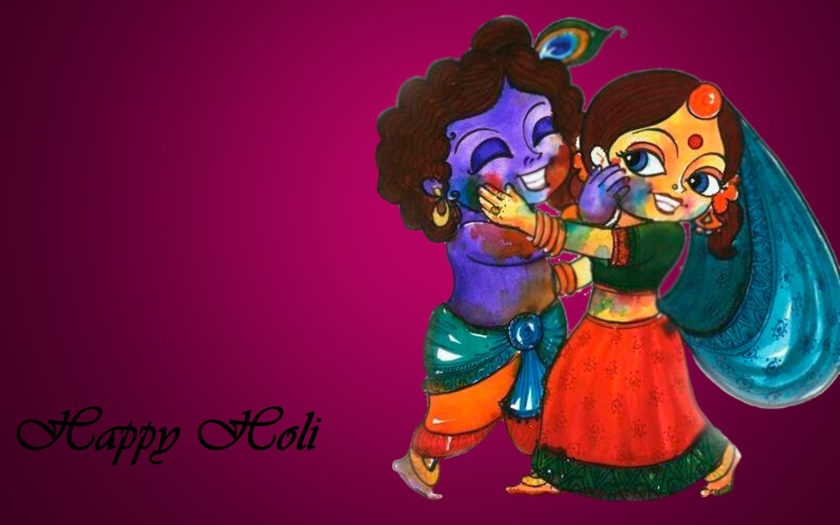India in all its divinity celebrates its diversity and culture through its various festivals. Holi the festival of colours, epitomises the very spirit of India where every soul is welcomed with a warm embrace of compliance.
Holi is a lively Hindu festival which celebrates the arrival of spring. Its mention can be traced back to the ancient hindu scriptures which associated the festival with worship of the gods as well as celebrating the onset of spring. It falls around the time of the vernal equinox which is traditionally the first day of spring. Several legends and myths are concorded with Holi and although it may be celebrated in different versions throughout India, the underlying purpose remains same, surpassing the evil to celebrate the birth of new.

The legend of holi tells the story of Prahlad, son of the demon king hiranyakashyap who dared to contravene his father’s orders to cease worshipping Lord Vishnu. As a result he was subjected torture and punishment which included him having to sit on a burning pyre with his aunt holika. Holika, who was immune to fire by the god’s grace, miraculously was charred to ashes while the devout young Prahlad remained safe and sound. This story eventually led to the burning of Holika Dahan, one day prior to holi, where a wooden pyre is burnt as a symbol of eradicating the evil so that pious new life grows in the world. Like many spring festivals around the world, it also represents the burning away of the dullness of winter and the mother earth’s beautiful adornment as a newlywed bride during spring.

Holi celebrates the rejuvenation of earth that arrives with the flowers and vivacity of spring. People smear each other with colours traditionally made from flowers, herbs and roots with medicinal value which is considered to act as protection against fevers and illness associated with the change of season. Red, green, yellow, blue and black powders fly from rooftops and in crowded squares and the festival transcends classes and caste. This lively festival is celebrated over several days and includes creating beautiful and intricate rangoli or kolam patterns at the thresholds of houses to bless visitors and those who enter. Exchange of greetings, desserts and fun filled gatherings of family and friends is what makes this festival one of the most awaited festivals in Indian culture. The day after the burning of Holika, some people mark their foreheads with the ashes from the pyre mixed with sandalwood as a symbol of keeping away evil. Though for many people it is a secular holiday, Holi ultimately signifies the triumph of good over evil and of sensual values over spiritual ones.
The people of Odisha celebrate “Dola” on the day of Holi where the icons of Jagannath replace the icons of Krishna and Radha. Dola Melana, processions of the deities are celebrated in villages and bhoga is offered to the deities. “Dola yatra” was prevalent much before Holi was started where the idols of Jagannatha, Balabhadra and Subhadra used to be taken to the “Dolamandapa” (podium in Jagannath temple). People used to offer natural colors known as “abira” to the deities and apply on each other’s feats. dol jatra’ or ‘dol purnima’ is monumentally celebrated in west Bengal one day before holi specially in Shantiniketan where the students of viswa bharati university engage in the frolics of ‘basanta utsav’ with all and sundry. In Bihar holi or phaguwa is celebrated with soulful dholak beats and folksongs and people engage in large numbers to play with colours while enjoying a drink of intoxicating bhaang and other mouth watering delicacies like Gujayia and Kheer.

Holi helps to bring the society together and strengthen the secular fabric of our country. The festival is celebrated by people irrespective of their religion as its charm celebrates the spirit of bonhomie and brotherhood, it is the day when hostility and enmity vanishes into oblivion as the smiles on people’s faces outshine the colours decked on them.